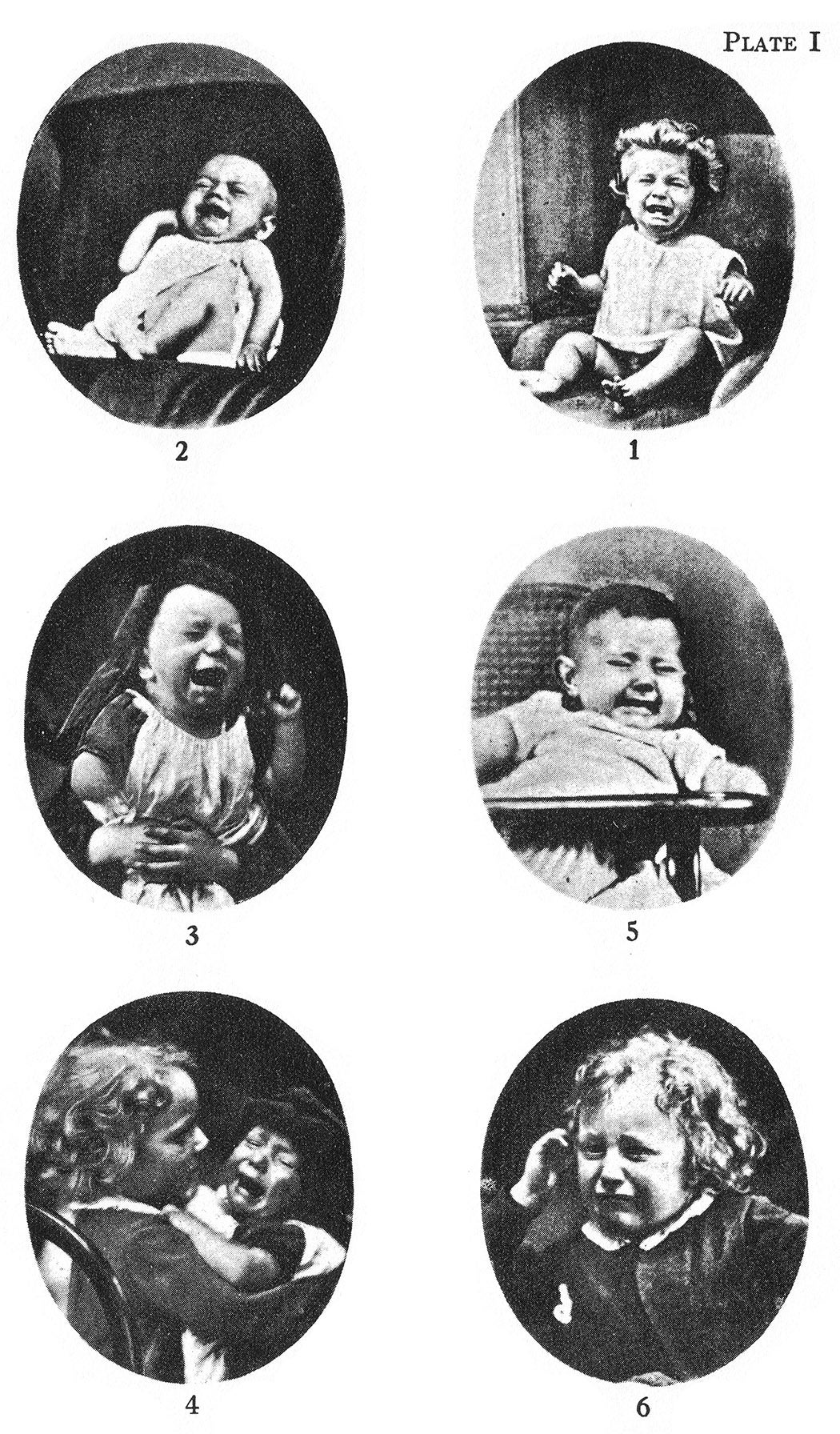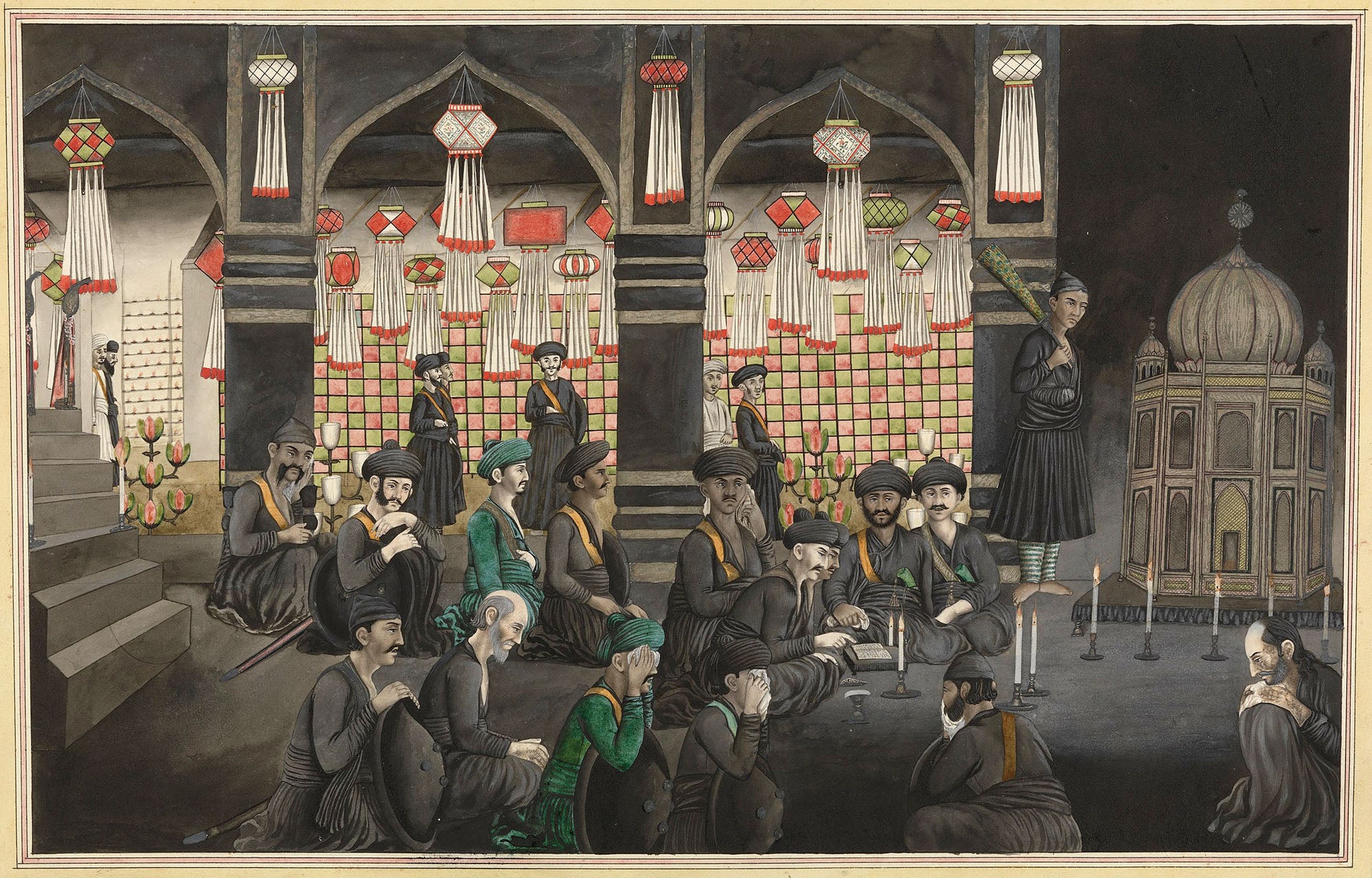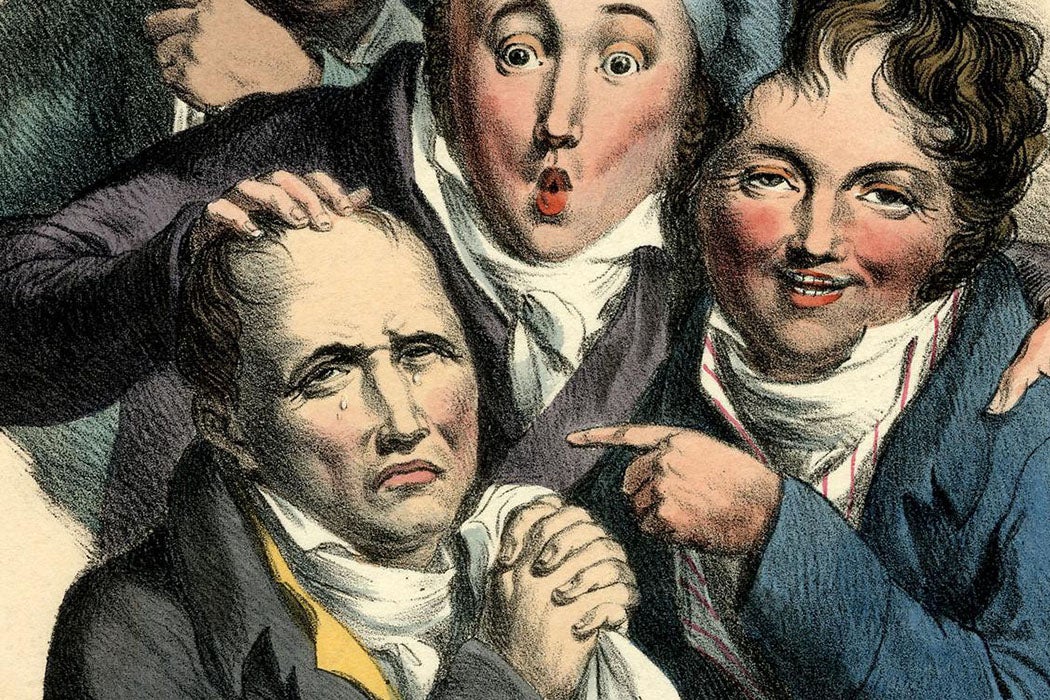In September 2022, Roger Federer ended his professional career playing doubles alongside Rafael Nadal, a fierce competitor during his long career. Soon after, clips of the tennis greats sitting side by side and weeping unabashedly swirled around the internet sparking adulatory tweets about how the act normalized men weeping in public. The remarks obliquely referred to the stereotype that for men, crying diminishes masculinity. The phrase “boys don’t cry” has appeared in songs, movie titles, and advertisements to signal the expectation that men are to sail through whatever challenges without expressing their vulnerability. Discussions about this stereotype emerge now and again in mainstream media, but the long and fraught history that generated it often goes unnoticed.
While the origin of the stigma against men’s tears is unclear, historian Bernard Capp notes that as early as the 16th century a treatise on human physiology declared weeping to be natural among women but an anomaly among men. The Treatise of Melancholie perceived sadness as a disease and tears as its by-product. Women were likely to contract the ailment owing to “a moist, rare, and tender body, especially of brayne and heart” while a dry and hard composition made men more resistant to it.
Weekly Newsletter
In 1857, T. C. Sanders used the phrase “muscular Christianity” in a book review of a work by Charles Kingsley. The same phrase grew immensely popular in Victorian England and was used to champion the development of a chivalrous and patriotic character among Englishmen. In his ballad, “Three Fishers,” about anglers venturing into the treacherous sea, Kingsley observed that “men must work and women must weep.” He was asserting that weeping was a gendered act; men were the breadwinners while women anxiously waited and later mourned when their husbands’ corpses washed up on the shore. The ballad gained such popularity that, in 1883, Walter Langley, an English artist, used the line as a title for a painting. Over the years, “muscular Christianity” came to dominate the ideologies influencing the men who represented Britain’s imperial ambitions.
These rigid notions of masculinity crystallized with English imperialism. The young men sent to serve as administrators in the colonies were meticulously trained to cultivate a “stiff upper lip,” often through public school education. Elite institutions such as Eton, Harrow, and Radley monitored students and crafted regimentation marked by corporal punishments and intensive sports such as rugby and gymnastics. Literature about public schools is replete with instances of rampant bullying and fagging, a boarding school practice where younger students acted as personal servants of older students. In Thomas Hughes’s Tom Brown’s School Days, published in 1857, the protagonist is ridiculed for crying after he learns that a letter he sent his mother would not reach her. A passing student sees Tom and derides him,”calling him “Young-mammy-sick.” Alfred Crofts notes that public school lexicon “rudely warped” words that conveyed strong emotions. “To be hurt was to be stung and if to the point of tears, stung up; crying was blubbing, a word of abysmal contempt”.
Stoicism in the face of loss had become such an indispensable part of the English personality that the phrase ‘stiff upper lip” came to be associated with it. The practice of withholding the display of emotions during moments of crisis heightened during the two world wars. Historian Thomas Dixon notes that the following song from the Hollywood movie Damsel in Distress (1937) sealed the association of Englishmen with the “stiff upper lip:”
“Stiff upper lip, stout fella
When you’re in a stew
Sober or blotto, this is your motto
Keep muddling through.”
The true origin of the “stiff upper lip,” however, lies in the United States. In 1815, it appeared in the Massachusetts Spy; additionally, when George bids goodbye to Uncle Tom in Harriet Beecher Stowe’s 1852 novel Uncle Tom’s Cabin, he asks to maintain a “stiff upper lip.” The phrase also appears in the Dictionary of Americanisms (1848). The attitudes of politicians in the United States demonstrate that emotional restraint was considered a virtue in the American imagination as well. During the Spanish-Cuban War (1895-1898), American accounts in support of Cuba disparaged Spanish soldiers by portraying them as childlike. Regarding Spanish troops, an author in the magazine Arena wrote, “I have seen a whole company crying like children because one of their number had received a letter from home, and the rest were homesick.”
Deriding male adversaries as childlike was likewise common red in the writings of British imperialists. In “White Man’s Burden” from 1899, Rudyard Kipling encouraged Americans to be “done with their childish days” and instead bear the burden of bringing Western notions of civilization to the Philippines whose citizens he depicts as “half-devil and half-child.” Although Teddy Roosevelt—not yet in office—considered this “rather poor poetry,” he agreed with the overall imperialist sentiment. Meanwhile President William McKinley described the Filipinos as “these wards of the Nation,” while Brigadier General Thomas Rosser said that they were as “incapable of self government as college freshmen.”

In 1872, Charles Darwin employed the same trope while drawing the connection between race and men’s emotional restraint in The Expressions of the Emotions in Man and Animals. Darwin placed Englishmen at the pinnacle of civilization while other nationalities occupied various lower rungs in the hierarchy, writing:
“…savages weep copiously from very slight causes, of which fact Sir J. Lubbock has collected instances. A New Zealand chief ‘cried like a child because the sailors spoilt his favourite cloak by powdering it with flour.’ I saw in Tierra del Fuego a native who had lately lost a brother, and who alternately cried with hysterical violence, and laughed heartily at anything which amused him. With the civilized nations of Europe, there is also much difference in the frequency of weeping. Englishmen rarely cry, except under the pressure of the acutest grief; whereas in some parts of the Continent the men shed tears much more readily and freely.”
Shortly after the publication of Darwin’s book, Thomas Higginson, a Unitarian clergyman, sent him a letter stating, “I often noticed it among my Black soldiers who wept easily from anger, shame or disappointment.” Higginson goes on to mention an incident where a Black soldier returned from military combat and wept upon finding that his friend had eaten his sugarcane.

As masculinity and weeping became part of a discourse legitimizing English imperialism, nationalists in colonial India actively pondered the attributes of Indian masculinity. Thus, the stigma against men’s tears travelled to places that have culturally and historically accommodated male vulnerability. There are numerous examples of spiritual weeping in colonial India. According to historian Margrit Pernau, Shia Muslim men engaged in intense lamentation, recited elegies, and wailed during the yearly Muharram gatherings to mourn the martyrs of the Battle of Karbala. Participants prepared themselves for this experience not only by recalling the Karbala events but also by drawing on personal experiences of grief and memories of earlier processions. Pernau references Syed Akbar Hyder’s Reliving Karbala, in which the author remembers Muharram gatherings from his youth, writing “wee children could never cry and wail as our elders did. At times when we tried our very best to cry, our theatrical sobs gave way to gales of laughter, much to our elders’ dismay. That sorrow comes with age is self-evident to young Shias!”
The 19th-century Hindu saint from Bengal, Ramakrishna Paramahamsa, too, was prone to tears of devotion. His disciples stated that Ramakrishna would pass into a trance that induced intense weeping at one moment and laughter the next. According to the Kathamrita, the record of Ramakrishna’s teachings, the saint once said that rather than weeping for wives, children, and money, men should cry earnestly to perceive God.
While Ramakrishna encouraged being lachrymose, the 19th century also witnessed resistance to men’s emotional vulnerability as ideas of nationalism began to flourish in India. Ramakrishna’s most famous disciple, Swami Vivekananda, emphasized manliness rooted in sports and spirituality that looked similar to Victorian notions of masculinity. At a meeting in Madras in 1897, Vivekananda urged Indian men to cultivate a strong will and self-belief for the sake of the nation. Vivekananda stated that Englishmen drew strength from their national identity while Indian men had been taught that they are weak and “can do nothing.”
“We have wept long enough,” Vivekananda said. “No more weeping, but stand on your feet and be men. It is man-making religion that we want. It is man-making theories that we want. It is man-making education all around that we want.” It is also significant that Vivekananda, a Bengali monk, spoke about a lack of self-confidence at a speech delivered in south India. This could be an allusion to the “martial races theory,” by which the colonial government considered certain ethnic communities from North-Western India such as the Gurkhas, Sikhs, and Jats as better warriors due to the generally broad and tall physique of their members. They were labelled as “martial races,” while, in contrast, Bengalis and most south Indian communities were perceived as lazy owing to their diets and origin in warmer climates. Claims of effeteness lay at the heart of British ridicule of “non-martial races.”
Public spaces in colonial India became the metaphoric stage where masculinity was performed for the eyes of other communities. After the death of the Bengali novelist, Bankim Chandra Chattopadhyay, in 1894, the writer Nabinchandra Sen was invited to preside over a condolence meeting organized in his memory. Despite his admiration for the novelist, Sen expressed his disapproval of the purpose of the meeting, saying, “As a Hindu, I do not understand how one can call a public meeting to express one’s grief. A meeting to express grief, think of it!” and furthermore demands, “how many buckets have you arranged for the public’s tears?”
While derisive of the institutionalized expression of sorrow, Sen had no qualms about shedding tears at home. In his autobiography, Sen ruminates about an exhausting period his life when he tried to strike a balance between his job and his writing. While composing the final segment of his poem, “Rangamati,” Sen was moved to tears and quickly realized that this brought passion to his artistic creation. After this revelation, he would deliberately work himself up to a fit of tears. However, sudden work-related engagements left him with no spare time to write. On returning to his unfinished poem after two weeks, Sen was aghast upon realizing that he had grown so distant from his creation that he could no longer weep. He forced himself to complete the poem but declared that emotional fervor was vital for composing good poetry.
With the rise of nationalism, revolutionary organizations such as the Anushilan Samiti and Jugantar, founded in 1902 and 1906 respectively, sprung up in Bengal under the garb of gyms (akharas) as early signs of anti-colonial resistance. The activist Sarala Devi Chaudhurani started the Pratapaditya Utsav in 1903 which provided a platform for young men to demonstrate their skills in boxing, fencing, and wrestling. Similar organizations flourished in other parts of the country as well and together they shaped the desirable traits of Indian masculinity. As spirituality, discipline, and physical fitness became a part of the nationalist endeavor, the distance between weeping and masculinity grew. Even today, Hindu right-wing organizations emphasize the cultivation of physical fitness through exercise and training programs akin to boy scouts. The stereotype, in Hindi, mard ko dard nahi hota (men don’t feel pain) is popular enough to appear as the title of a 2018 Bollywood movie, suggesting that while the British Imperialist project is long dead, its lessons—for good and ill—live on.
Support JSTOR Daily! Join our new membership program on Patreon today.







